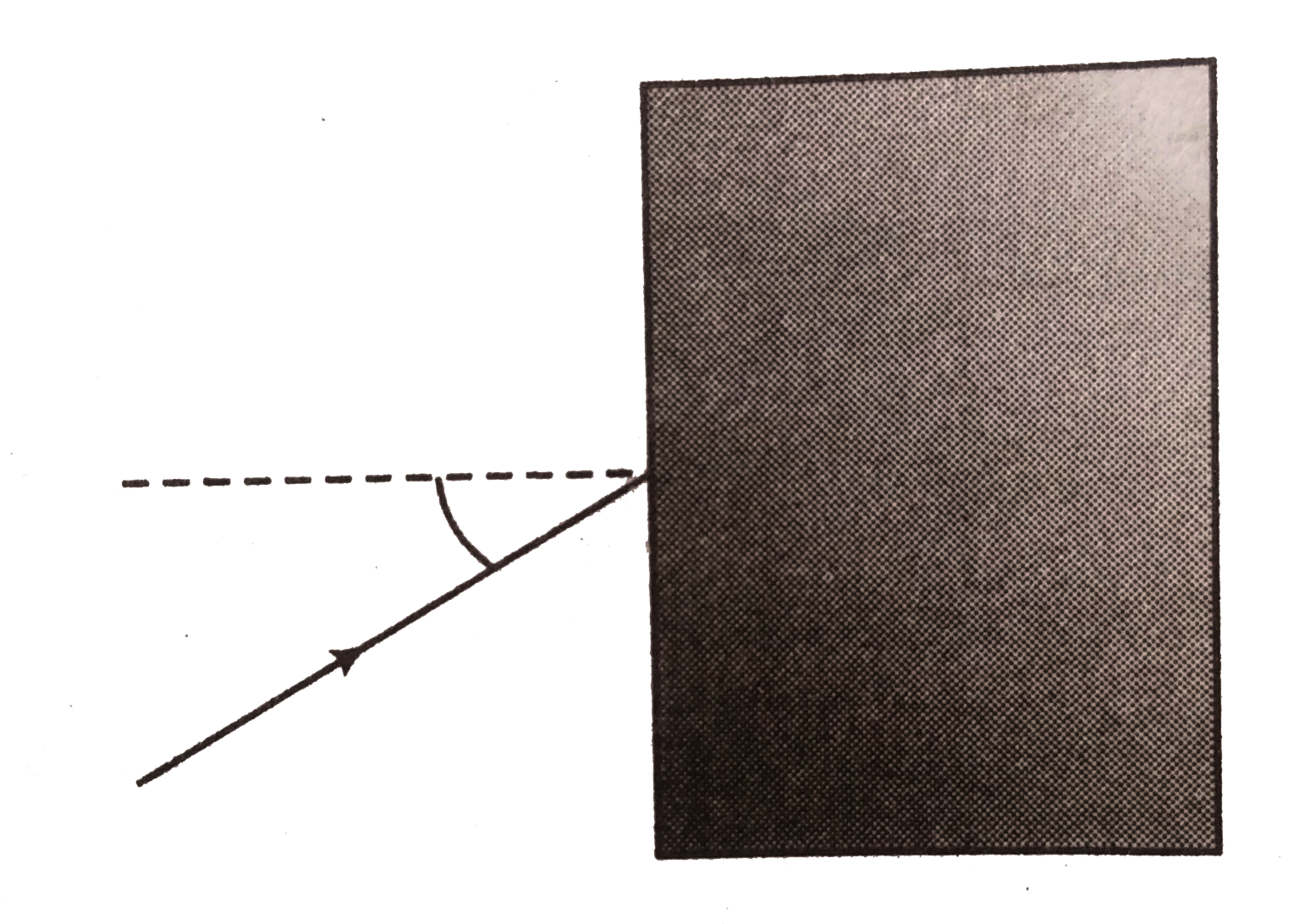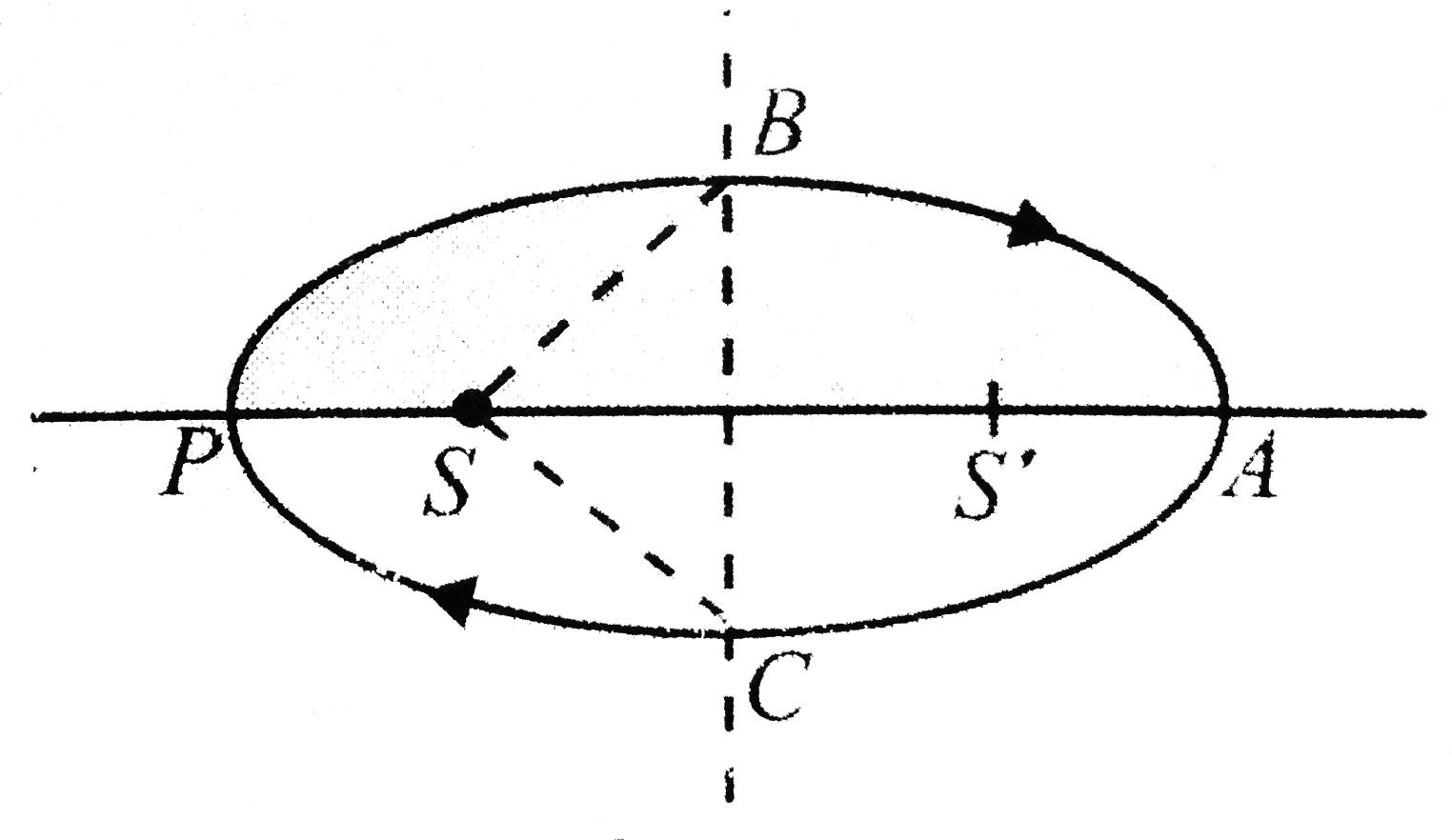A planet is moving in an elliptical path around the sun as shown in figure. Speed of planet in positions P and Q are V1 and V2 respectively with SP=r1 and SQ=r2 , then v1/v2 is equal to

r1r2
r2r1
(r2r1)2
(r1r2)2
The correct Answer is:B
Topper's Solved these Questions
Similar Questions
An electric dipole is placed at an angle of 30∘ with an electric field intensity 2×105N/C. It experiences a torque equal to 4Nm. The charge on the dipole, if the dipole length is 2cm, is
View SolutionA ray of light is incident on the left vertical face of the glass slab. If the incident light has an intensity I and on each reflection the intensity decreases by 90% and on each refraction the intensity decreases by 10%, find the ratio of the intensities of maximum to minimum in reflected pattern.

View SolutionLet the speed of the planet at the perihelion P in figure be v_(P) and the Sun planet distance SP be r_(P) . Relater r_(P), v_(P) to the corresponding quantities at the aphelion (r_(A),v_(A)) . Will the planet take equal times to transverse BAC and CPB ?
View SolutionA plenet moving along an elliptical orbit is closest to the sun at a distance r1 and farthest away at a distance of r2. If v1 and v2 are the linear velocities at these points respectively, then the ratio v1v2 is
View SolutionA planet is revolving round the sun is elliptical orbit. Velocity at perigee position ( nearest) is v_(1) and at apogee position ( farthest) is v_(2) . Both these velocities are perpendicular to the line joining centre of sun and planet. r_(1) is the minimum distance and r_(2) the maximum distance. At apogee position suppose speed of planet is slightly decreased from v_(2) , then what will happen to minimum distance r_(1) and maximum distance r_(2) in the subsequent motion.
View SolutionThe figure shown below is an elliptical orbit along which a planet revolves round the sun. Let the velocity of the planet at points P and Q be V_(1) "and" V_(2) respectively. Then, the possible relationship between magnitudes of 'V_(1)' "and 'V_(2)' is
View Solutionमान लीजिए किसी ग्रह की उपसौर P पर (चित्र) चालू vP है, तथा सूर्य व ग्रह की दूरी SP=rP है। {rP,vP} तथा अपसौर पर इन राशियों के तदनुरूपी मान {rA,vA} में संबंध स्थापित कीजिए। क्या ग्रह BAC तथा CPB पथ तय करने में समान समय लेगा?
View SolutionA planet moving along an elliptical orbit is closest to the Sun at distance r_(1) and farthest away at a distance of r_(2) . If v_(1) and v_(2) are linear speeds at these points respectively. Then the ratio (v_1)/(v_2) is
View Solutionकिसी ग्रह की उपसौर स्थिति A में सूर्य से दुरी r1 तथा चाल v1 है। अपसौर स्थिति B में सूर्य से दुरी r2 तथा चाल v2 है। इन राशियों में संबंध स्थापित कीजिए। क्या ग्रह को CAD तथा DBC पथ तय करने में समान समय लगेगा ?
View SolutionLet the speed of the planet at the perihelion P in figure be vP and the Sun planet distance SP be rP. Relater rP,vP to the corresponding quantities at the aphelion (rA,vA). Will the planet take equal times to transverse BAC and CPB?

View SolutionA speed of the palnet at the perihelion P be V_(p) and the sun -planet distance SP be r_(P) as shown in fig. Relate {r_(p),v_(p)} to the corresponding quantities at the aphelion {r_(A),V_(A)} . Will the planet take equal times to traverse BAC and CPB?
View SolutionA planet moving along an elliptical orbit is closest to the Sun at distance r1 and farthest away at a distance of r2. If v1 and v2 are linear speeds at these points respectively. Then the ratio v1v2 is
View SolutionLet the speed of the planet at the perihelion P in figure be v_(P) and the Sun planet distance SP be r_(P) . Relater r_(P), v_(P) to the corresponding quantities at the aphelion (r_(A),v_(A)) . Will the planet take equal times to transverse BAC and CPB ?
View SolutionLet the speed of the planet at the perihelion P be V_(P) and the sun-planet distance SP be r_(p) . Relates (r_(p), V_(P)) to the corresponding quantities at the aphelion (r_(A), V_(A)) . Will the planet take equal times to tranverse BAC and CPB ?
View SolutionLet the speed of the planet at the perihelion P be VP and the sun-planet distance SP be rp. Relates (rp,VP) to the corresponding quantities at the aphelion (rA,VA). Will the planet take equal times to tranverse BAC and CPB ?
View Solution

